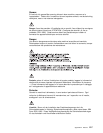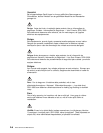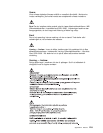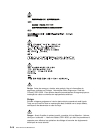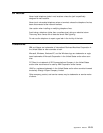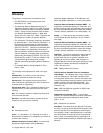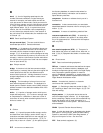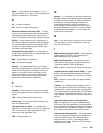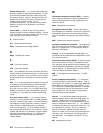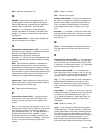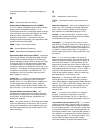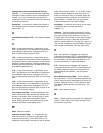
Glossary
This glossary includes terms and definitions from:
The
IBM Dictionary of Computing
(New York;
McGraw-Hill, Inc., 1994).
The
American National Standard Dictionary for
Information Systems
, ANSI X3.172-1990, copyright
1990 by the American National Standards Institute
(ANSI). Copies may be purchased from the Amer-
ican National Standards Institute, 11 West 42nd
Street, New York, New York 10036. Definitions are
identified by the symbol (A) after the definition.
The
Information Technology Vocabulary
, developed
by Subcommittee 1, Joint Technical Committee 1, of
the International Organization for Standardization
and the International Electrotechnical Commission
(ISO/IEC JTC1/SC1). Definitions of published parts
of this vocabulary are identified by the symbol (I)
after the definition; definitions taken from draft inter-
national standards, committee drafts, and working
papers being developed by ISO/IEC JTC1/SC1 are
identified by the symbol (T) after the definition, indi-
cating that final agreement has not yet been
reached among the participating National Bodies of
SC1.
The Network Working Group Request for Com-
ments: 1208.
The following cross-references are used in this glos-
sary:
Contrast with: This refers to a term that has an
opposed or substantively different meaning.
Synonym for: This indicates that the term has the
same meaning as a preferred term, which is defined in
its proper place in the glossary.
Synonymous with: This is a backward reference from
a defined term to all other terms that have the same
meaning.
See: This refers the reader to multiple-word terms that
have the same last word.
See also: This refers the reader to terms that have a
related, but not synonymous, meaning.
A
ac. Alternating current.
active. (1) Operational. (2) Pertaining to a node or
device that is connected or is available for connection to
another node or device.
Address Resolution Protocol (ARP). A protocol that
dynamically maps between Internet addresses,
baseband adapter addresses, X.25 addresses, and
token-ring adapter addresses on a local area network.
American National Standards Institute (ANSI). An
organization consisting of producers, consumers, and
general interest groups, that establishes the procedures
by which accredited organizations create and maintain
voluntary industry standards in the United States. (A)
analog. (1) Pertaining to data consisting of contin-
uously variable physical quantities. (A) (2) Contrast
with
digital
.
American National Standards Institute (ANSI). An
organization consisting of producers, consumers, and
general interest groups, that establishes the procedures
by which accredited organizations create and maintain
voluntary industry standards in the United States. (A)
AppleTalk. The routing architecture used to intercon-
nect Apple computers or workstations. AppleTalk
groups nodes (hosts) into physical networks corre-
sponding to local area network (LAN) segments or
bridged LANs and it allows the logical grouping of hosts
(regardless of network boundaries) into AppleTalk
zones. See also
zone
.
ARP. Address Resolution Protocol.
ASCII (American Standard Code for Information
Interchange). The standard code, using a coded char-
acter set consisting of 7-bit coded characters (8-bit
including parity check), that is used for information inter-
change among data processing systems, data commu-
nication systems, and associated equipment. The
ASCII set consists of control characters and graphic
characters. (A)
Note: IBM has defined an extension to ASCII code
(characters 128–255).
attachment unit interface (AUI). In a local area
network, the interface between the medium attachment
unit and the data terminal equipment within a data
station. (I) (A)
AUI. Attachment unit interface.
auto-baud. Automatic baud rate detection. A process
by which a receiving device determines the speed, code
level,and stop bits of incoming data by examining the
first character, usually a preselected sign-on character.
Auto-baud allows the receiving device to accept data
from a variety of transmitting devices operating at dif-
ferent speeds without needing to establish data rates in
advance.
Copyright IBM Corp. 1994, 1998 X-1



